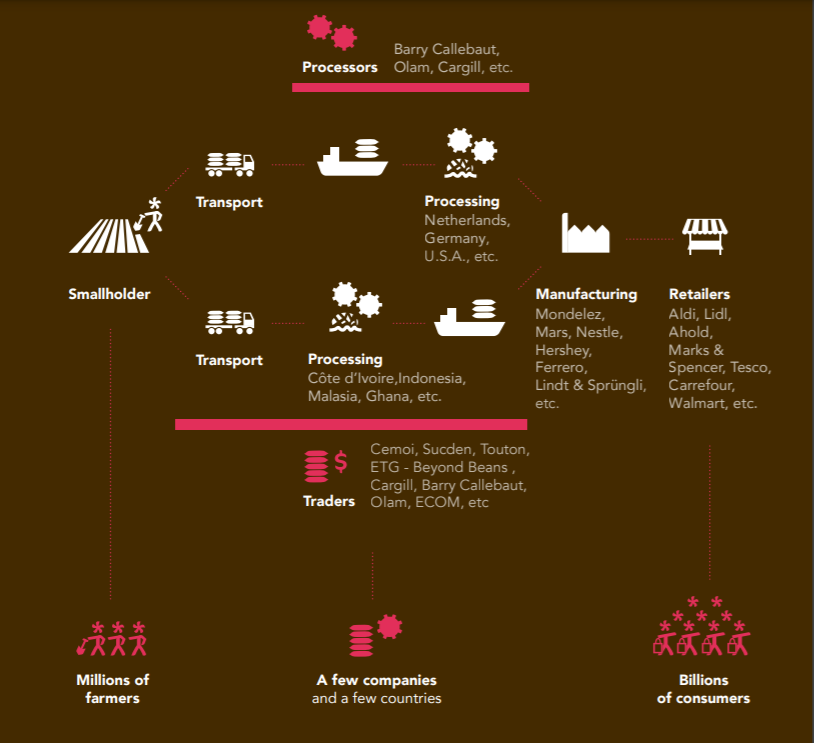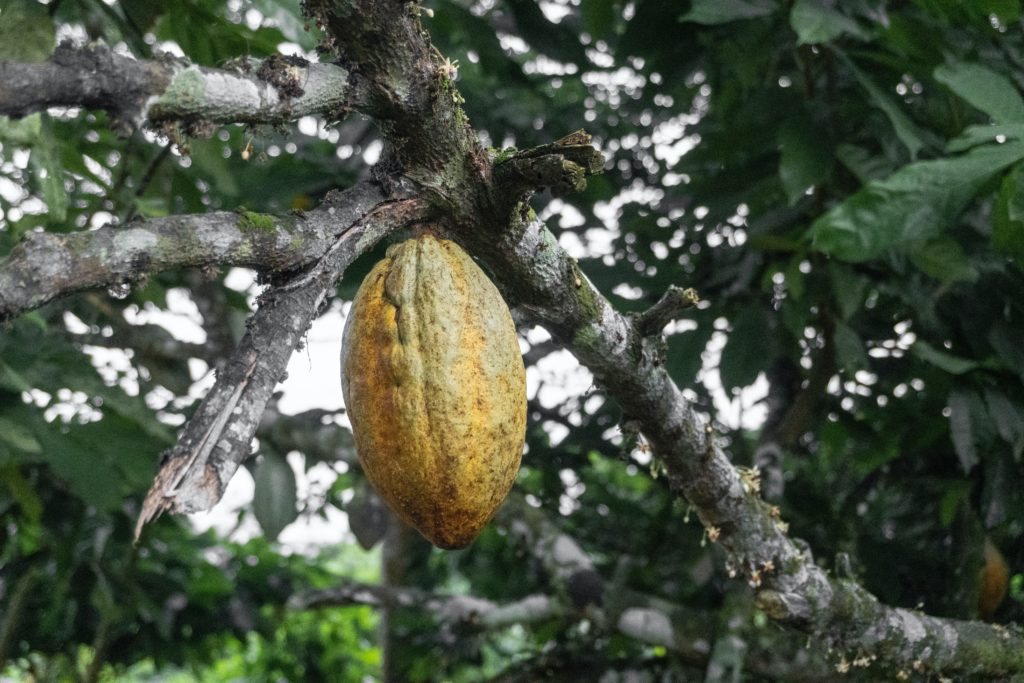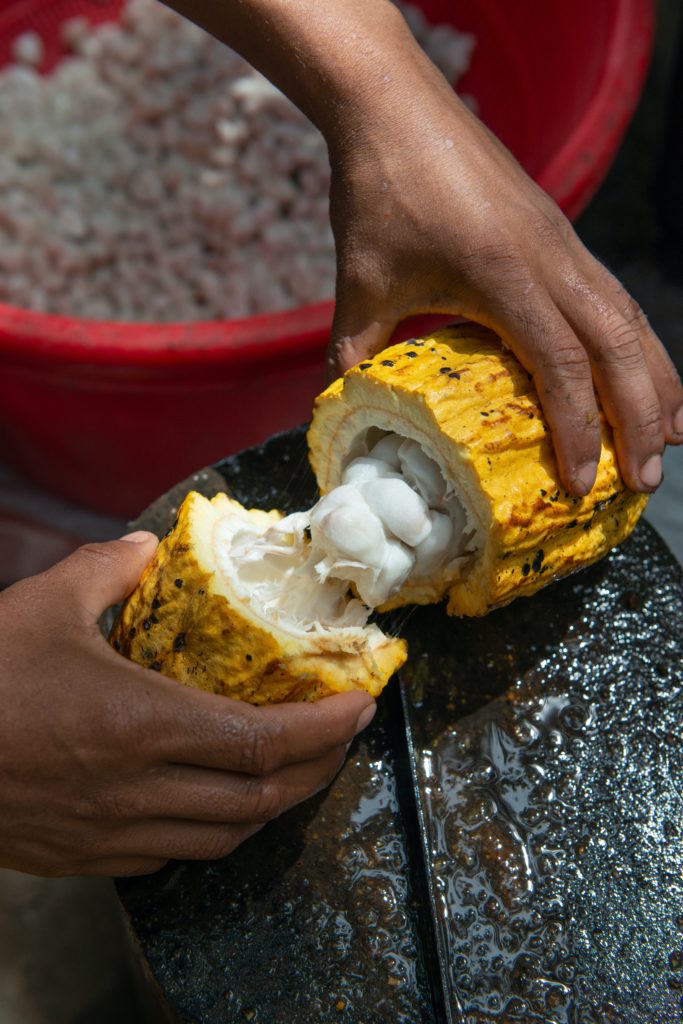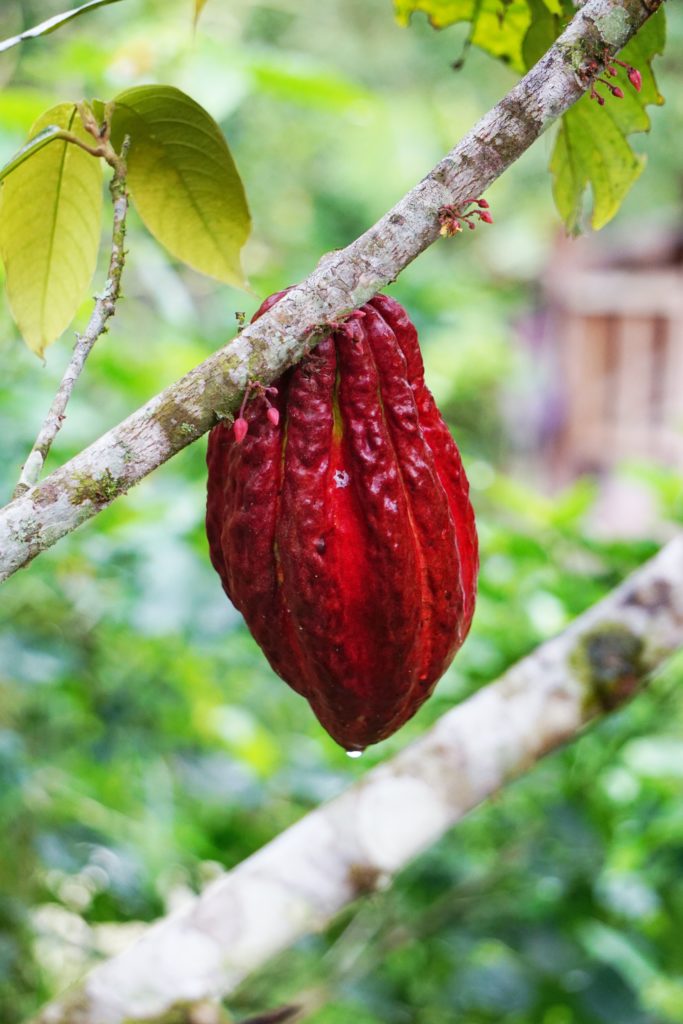This article is the first of the June Impactfull series, focusing on humanitarian and environmental issues in the chocolate and cocoa industry.
Chocolate is a universal treat, something that we all love in some form. We use it to celebrate and to commemorate.
Chocolate has a rich history. Originating in Central America, it was revered by the Mayans, who drank cocoa as a beverage, and the Aztecs, who used it as currency. Spanish conquistadors and colonizers were quick to bring the drink back to Spain, which soon became the leader of the European chocolate industry. As Europe became hooked on colonialism and beverages made from chocolate, cocoa agriculture shifted to European colonies in Africa.
It wasn’t until the mid-1800s that chocolate was produced and eaten in bar form. England was the epicenter of chocolate production with names like Cadbury and Nestlé. Soon, Hershey’s and Mars in the United States entered the lucrative industry.
Chocolate is unique for its rich taste, but also because of how it is made. Cocoa, the key ingredient in our chocolate, can only be grown in the area 20 degrees north and south of the equator. As a result, cocoa is only grown in a few places: Ivory Coast, Ghana, and several other countries in Africa, South Asia, and South America. Over half of the world’s cocoa is grown in Ivory Coast and Ghana alone.
How It’s Made: Chocolate
Your chocolate bar starts as a football-shaped pod on a cocoa tree, grown by one of millions of smallholder farmers who own or control the land that they farm– probably in West Africa, where 60 percent of the world’s cocoa is grown. The pods are cut down by hand and must be split open to access the fatty cocoa beans inside. Through a process of drying and fermenting, the cocoa beans are prepared for sale into a complex supply chain.

Pisteurs, who are cocoa industry middlemen, buy bags of cocoa beans directly from smallholder farmers, then transport those beans to a co-op or trader. The beans are processed into cocoa powder or cocoa butter by one of a few large processing companies: most likely Barry Callebaut, Olam or Cargill. The brands you know and love, like Hershey’s and Nestlé, produce the final product, which is then sold to retailers.
The Humanitarian Issues in the Chocolate Industry
While the process from bean to bar seems relatively simple, in reality, it’s fraught with inequity and exploitation. Of the millions of smallholder farmers who grow and harvest cocoa beans, only 9.4 percent earn a living income. Poverty is a structural feature of the cocoa supply chain– the enormous profits of chocolate companies don’t reach those who make your chocolate bar purchase possible.
Furthermore, dangerous and exploitative child labor is common in cocoa agriculture. A recent study found that there are 1.56 million child laborers in West Africa, the majority of whom work in dangerous conditions. Allegations of human trafficking and child slavery are common.
The poverty and exploitation endemic to cocoa production have driven deforestation and environmental destruction in West Africa. Pushed to produce more cocoa, farmers have entered protected forests. When grown in monoculture, cocoa trees deplete the soil, and decreasing biodiversity is a major concern.
This month, we’ll dive further into each of these problems– and their proposed solutions. Next Monday, we’ll start by looking at child labor in cocoa production. Until then, listen to our first podcast episode, available on Wednesday, June 2nd.
Go to www.impactfull.novelhand.com to learn more about the humanitarian issues in the chocolate industry and to access this month’s impact buttons to create change in the chocolate industry.
- College Football, Ariana Grande, and Water - September 3, 2023
- Livestock and Land Use: How Are We Feeding The Planet? Impactfull April 2022 - April 19, 2022
- What Does Voluntourism Look Like? A Case Study in a Cambodian Orphanage - March 28, 2022


